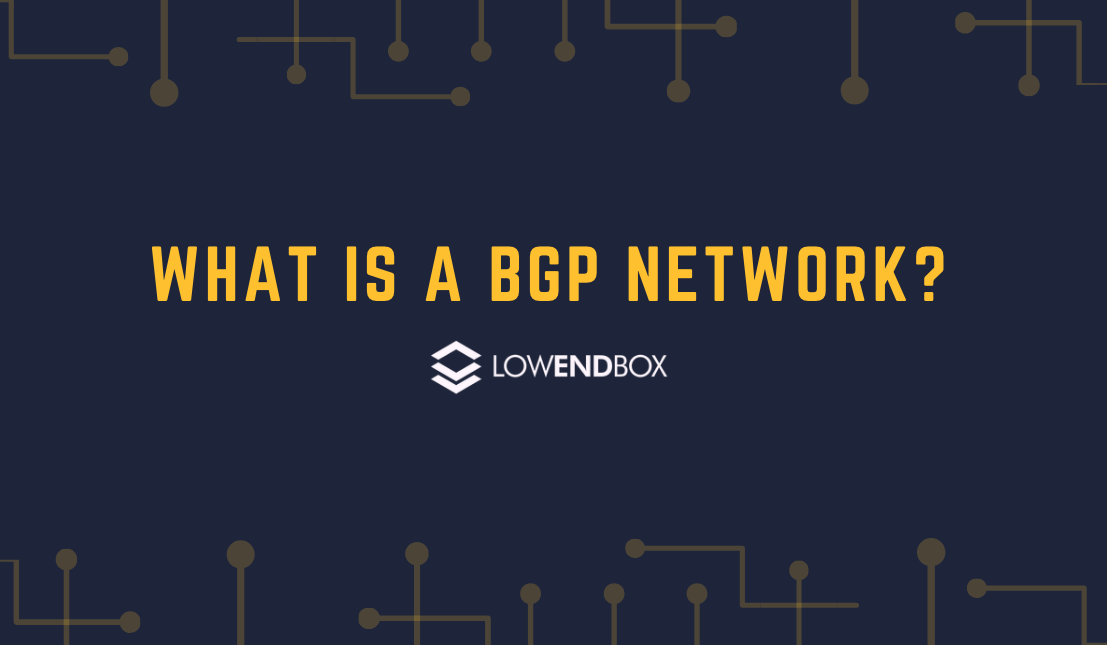This article was contributed by Dustin B. Cisneros from RackNerd, a seasoned contributor of the hosting industry for 12+ years. Are you looking for shared hosting, colocation, reseller hosting, VPS, private cloud or dedicated servers? Be sure to take a look at their latest promotions here on LowEndBox
Ever seen your hosting or VPS provider advertise that they have a BGP network mix – and you wonder what this means? Not to worry – this can be a good thing, and it means your provider runs a multi-homed network consisting of multiple ISP (internet service provider)’s in the mix. This means redundancy and performance is optimized.
Before we begin, let’s define some specialized terminology:
BGP stands for Border Gateway Protocol – with a BGP network, it will automatically analyze and select the best network route to take.
A Tier 1 ISP stands for an Internet Service Provider that can handle traffic from a wide variety of sources (access to the global internet) – such as your home internet provider. Examples of a Tier 1 ISP include: AT&T, Comcast, Verizon, Sprint, NTT, GTT, Cogent, Zayo, and more.
To give an illustrative example, let’s say you are located in Denver and your ISP is AT&T. Let’s say the best route to access your server in Chicago would be to take a route involving the tier 1 ISP provider Cogent. However, internet weather can always vary – so for example 2 weeks later, the best route that gets you the lowest amount of hops and latency might be another provider instead of Cogent, i.e. GTT.
Essentially, BGP will help route traffic over the best route in the blend the hosting provider has available – offering lowest latency at all times (determining the best network path to take). For example, RackNerd’s Los Angeles DC-02 location includes: CenturyLink, Cogent, GTT, NTT, China Telecom, China Unicom, and ChinaNet in its premium BGP network mix.
As another illustrative example using RackNerd’s network blend described above, let’s say NTT has an outage, and your ISP generally prefers to take routes over NTT. What if NTT has an outage? Well, if your provider is single-homed (meaning they do not have a BGP network, and only have one ISP in the network blend) that means your server’s network would become inaccessible until NTT sorts out the outage. With a BGP network mix, it will automatically re-route against the problematic carrier (in this example, NTT) to another carrier, all without any downtime or interruption to your server.
As you can tell, not only is a BGP network important but what’s more important is the network providers within the blend. For example, a provider that only has Cogent and Zayo may be classified as more of a “budget” hosting experience versus a hosting provider that has more than a couple network carriers in their BGP mix, who would otherwise be classified as “premium.” Please note your definition of “budget” and “premium” may vary based upon your requirements and preferred ISP routing (your mileage may vary!) – this is only for example purposes, but it goes without saying that the more carriers, the better. So before buying your VPS – be sure to check with your provider and ask them what network carriers are included in their network mix. You could even ask how their network is structured/designed so that you can understand the redundancy they have in place. Another good thing to look at is the provider’s service level agreement, this typically includes guarantees and compensation details.
Network Capacity is important! Sure – the more carriers, the better… but what’s the point if capacity is so small/limited with one carrier that it is not even being utilized in a real world environment? With that being said, be sure to also inquire with your provider before purchasing how much capacity they have with every ISP in their network blend. To help verify this, you can also ask for a Looking Glass – which will contain a test IP and test file that you can use to run traceroutes and verify which route/ISP’s that you are taking from your location. You can test from several other source locations by using a website such as http://ping.pe/ in order to test the Looking Glass Test IP, and verifying the network paths that various remote locations are taking.
Does your VPS or hosting provider have a BGP network blend? Have any questions about the topic? Or would you like to add something to it? What’s your favorite carrier? Comment below!
























Very easy to understand. Concept of multi homed/BGP mix wis very well elaborated.
Thank You Waqass — sincerely appreciate the feedback.
Also, Thank You to LEB for featuring it!